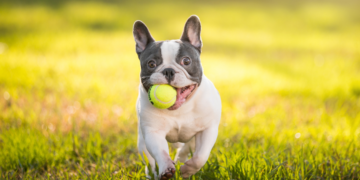Unleash the Potential: The Power of Proper Leash Training for Your Pup
Leash training is an essential skill for every dog owner. It not only ensures the safety of your pup but also contributes to a harmonious and enjoyable relationship between you and your furry friend. Proper leash training can unleash your dog’s potential, allowing them to explore the world around them while maintaining control and discipline.
The Benefits of Leash Training
Leash training provides numerous benefits for both you and your pup. Some of the key advantages include:
1. Safety:
Keeping your dog on a leash prevents them from running into dangerous situations such as traffic or encountering aggressive animals. It helps you maintain control over your pup in unfamiliar environments or busy public places.
2. Bonding:
Leash training creates a strong bond between you and your dog. It fosters trust and communication, leading to a deeper connection between the two of you. Spending time training your pup on a leash strengthens your relationship and builds a sense of teamwork.
3. Behavior Control:
Walking on a leash teaches your dog to follow your commands and behave appropriately in various situations. It instills discipline and obedience in your pup, making them more well-behaved and responsive to your guidance.
Common Leash Training Techniques
There are several effective techniques you can use to train your pup to walk on a leash. Some of the most popular methods include:
1. Positive Reinforcement:
Use treats, praise, and rewards to encourage your dog to walk nicely on a leash. Whenever your pup behaves well, give them a treat or verbal praise to reinforce the desired behavior. This positive reinforcement helps your dog associate walking on a leash with good things, making them more likely to comply.
2. Clicker Training:
Clicker training involves using a small clicker device to signal to your dog when they have done something right. By clicking and rewarding your pup for walking on a leash without pulling or lunging, you can effectively communicate what behavior you want to see from them.
3. Desensitization:
If your dog is fearful or anxious about walking on a leash, desensitization can help them become more comfortable. Gradually expose your pup to the leash and harness, starting with short periods of wearing them indoors before moving to outdoor walks. Pairing the leash with positive experiences can help your dog overcome their fears and build confidence.
FAQs About Leash Training
Here are some common questions that dog owners have about leash training:
1. How long does it take to leash train a dog?
The time it takes to leash train a dog varies depending on the individual pup and their previous experiences. Some dogs may learn quickly and become comfortable on a leash within a few days, while others may take weeks or even months. Consistency, patience, and positive reinforcement are key to successful leash training.
2. What type of leash is best for training?
The best leash for training your pup depends on their size, temperament, and walking style. A standard six-foot leash made of nylon or leather is a good choice for most dogs. Retractable leashes can be useful for allowing your pup more freedom while still maintaining control, but they require careful handling to prevent tangling or accidents.
3. How do I stop my dog from pulling on the leash?
To prevent your dog from pulling on the leash, use positive reinforcement to reward them for walking calmly by your side. Avoid jerking or yanking on the leash as this can cause discomfort or injury to your pup. Practice loose leash walking regularly and redirect your dog’s attention whenever they start to pull, encouraging them to focus on you instead.
Tips for Successful Leash Training
Follow these tips to ensure a successful leash training experience with your pup:
1. Start Early:
Begin leash training your dog as soon as possible, ideally when they are still a puppy. Early intervention helps your pup develop good walking habits from the start and prevents the formation of bad behaviors.
2. Be Consistent:
Consistency is key to effective leash training. Use the same commands, rewards, and techniques every time you walk your dog to reinforce the desired behavior. Avoid sending mixed signals that can confuse your pup.
3. Practice Patience:
Leash training takes time and effort, so be patient with your pup as they learn. Expect setbacks and mistakes along the way, but remain positive and encouraging to help your dog progress.
Conclusion
Proper leash training is a crucial skill that every dog owner should master. By investing time and effort into training your pup to walk on a leash, you can enjoy walks together, explore new environments, and build a strong bond based on trust and communication. Remember to use positive reinforcement, be consistent, and practice patience to unleash the full potential of your furry friend.
Leash training is not only about safety and control but also about empowerment and enrichment for your dog. By mastering the art of leash training, you can unlock your pup’s potential and create a fulfilling and rewarding relationship that lasts a lifetime.














































